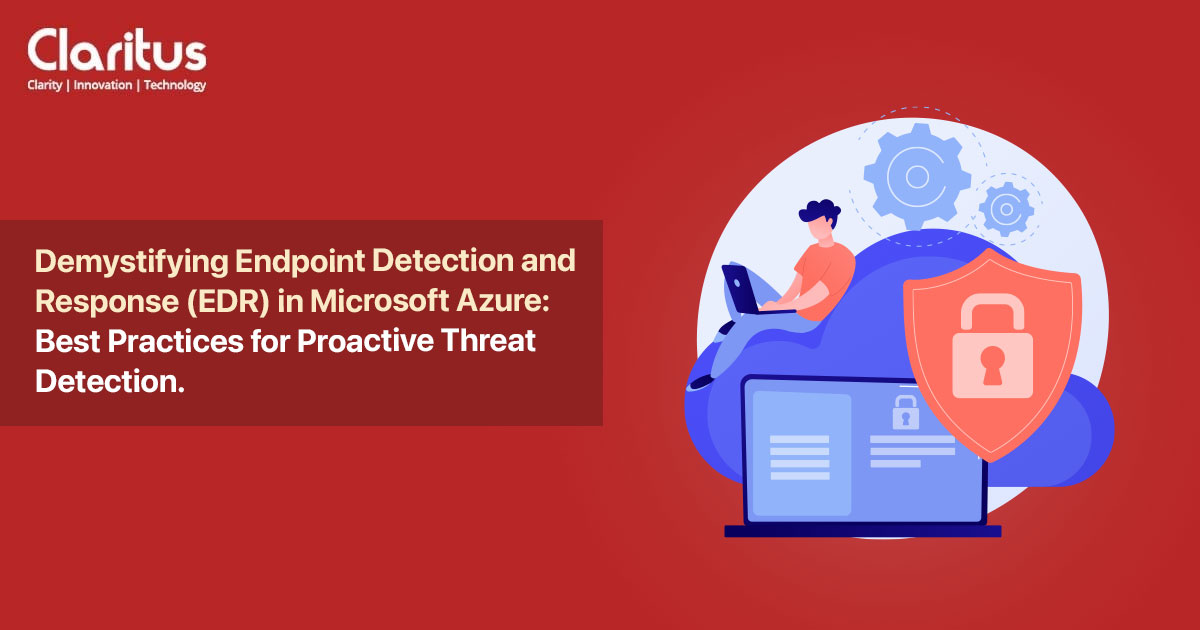Unravelling the Mysteries of Azure Security: Navigating Endpoint Detection and Response (EDR)

In the sprawling landscape of cloud computing, security stands tall as the beacon of trust and reliability. As organizations increasingly migrate their operations to the cloud, the need for robust security measures becomes paramount. Amidst the azure skies of Microsoft Azure, one aspect shines brightly in the realm of threat detection: Endpoint Detection and Response (EDR). Let’s embark on a journey to demystify EDR within Azure, unraveling its intricacies while uncovering the best practices for proactive threat detection.
Picture this: your digital infrastructure, intricately woven into the Azure fabric, humming with productivity and innovation. But amidst this bustling activity lies the lurking shadow of cyber threats, waiting to exploit vulnerabilities and disrupt operations. Enter EDR, the sentinel of your Azure environment, tirelessly monitoring endpoints to detect and respond to malicious activities in real-time.
At its core, EDR within Microsoft Azure is a proactive defense mechanism, arming organizations with the tools to swiftly identify, investigate, and mitigate security incidents across their cloud infrastructure. But how does it work? Imagine EDR as a vigilant guardian, stationed at each endpoint within your Azure ecosystem, equipped with advanced threat detection algorithms and behavioral analytics. It monitors every interaction, every file access, every anomaly, sifting through the digital noise to pinpoint potential threats before they escalate.
Now, let’s delve into the realm of best practices for harnessing the full potential of EDR in Microsoft Azure:
Comprehensive Endpoint Coverage: Begin by ensuring that every endpoint within your Azure environment is equipped with EDR capabilities. From virtual machines to containers, leave no stone unturned in your quest for security.
Continuous Monitoring and Analysis: Embrace the power of real-time monitoring and analysis. EDR thrives on data, constantly collecting and analyzing telemetry to identify patterns indicative of malicious behavior. Stay vigilant, stay proactive.
Threat Intelligence Integration: Arm your EDR solution with the latest threat intelligence feeds. By integrating threat intelligence sources, you empower your defences to stay ahead of emerging threats, fortifying your Azure environment against evolving attack vectors.
Automated Response Mechanisms: In the face of a potential security incident, time is of the essence. Implement automated response mechanisms within your Azure environment to swiftly contain and neutralize threats before they spread.
Collaborative Incident Response: Foster collaboration between your security operations team and EDR solution. Establish clear communication channels and workflows to ensure seamless coordination during incident response activities.
Regular Security Assessments and Updates: Keep your EDR solution finely tuned and up-to-date. Conduct regular security assessments and apply patches and updates promptly to address any vulnerabilities and enhance overall efficacy.
Employee Training and Awareness: Remember, your frontline defense against cyber threats is your workforce. Invest in comprehensive employee training programs to raise awareness about security best practices and empower individuals to identify and report potential threats.
By embracing these best practices, organizations can harness the full potential of EDR within Microsoft Azure, fortifying their cloud environments against the ever-evolving threat landscape. But the journey doesn’t end here. As technology advances and adversaries grow more sophisticated, the realm of cybersecurity remains in a constant state of flux. Embrace a mindset of continuous improvement, adaptability, and resilience. Stay curious, stay vigilant, and together, we can navigate the azure skies of Microsoft Azure with confidence and security.
In conclusion, Endpoint Detection and Response (EDR) in Microsoft Azure represents a beacon of hope in the fight against cyber threats. By demystifying its complexities and embracing best practices for proactive threat detection, organizations can fortify their Azure environments and embark on a journey towards a secure and resilient future. Let’s rise to the challenge, together.
